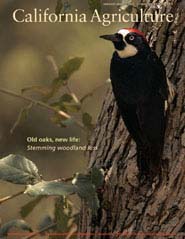All Issues

Old oaks, new life: Stemming woodland loss
Cover:
Acorn woodpeckers rely on oaks for food and breeding habitat. Photo: B. Moose Peterson / WRP.
January-March 2007
Volume 61, Number 1
Volume 61, Number 1
News and opinion
General Information
LETTER
Letters: January-March 2007





